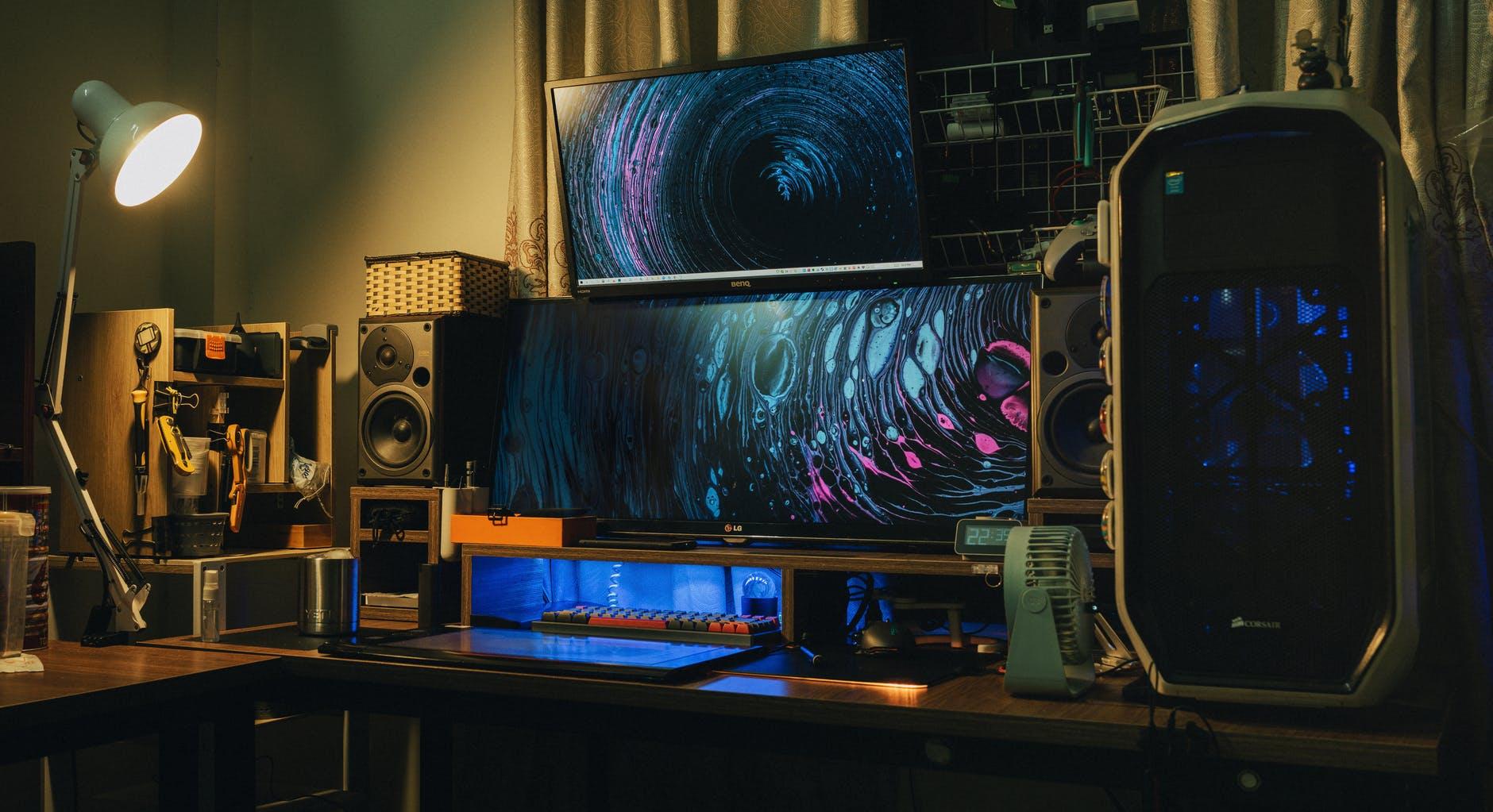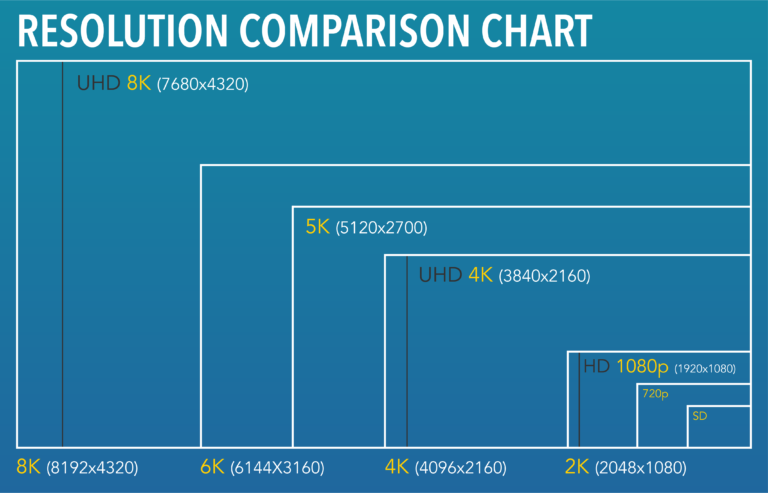5 Ways to Choose 5K and 8K Monitors for Gaming in 2021

We were so amazed that we’ve reached 4K resolution on viewing monitors. But now, we’ve reached a new milestone in screen resolutions.
5K and 8K monitors are now released in the market. These monitors offer a resolution that can be used by professionals in both the gaming and design community.
Here are some of the things you need to consider when choosing 5K and 8K monitors in the market. Let’s also look at the differences between 4K, 5K, and 8K resolutions.
Difference Between 4K, 5K, and 8K Resolutions

Resolution chart ranging from 720p to 8K UHD.
The difference between 1080p HD monitors compared to UHD 8K monitors is huge. Even when compared to a 4K UHD monitor, the gap is still pretty obvious. With 5K monitors, not so much.
For gaming, a 4K UHD monitor is highly suggested. If you don’t have a GPU that can support 4K resolution gaming, there’s no point in getting an 8K monitor. But if you’re into immersive games, here are some of the things to look for in choosing a 5K and 8K monitor for gaming.
5 Ways to Choose a Good 5K and 8K Gaming Monitor
Even though there are a few companies that began releasing 5K and 8K monitors, there are differences between the features of each unit. Some monitors are good for viewing only, while others can be used for gaming.
There are 5K and 8K monitors that support a 144Hz refresh rate, which is perfect for gaming. Here are other factors to consider in choosing what gaming monitor is best for you.
1. Resolution Quality
The first thing you need to understand about 5K and 8K gaming monitors is they are relatively wider compared to a 4K UHD monitor.
If you want smooth image quality, then you should choose a higher resolution (QHD or better) if you want a 27-inch monitor or larger. However, you should understand that the image quality that will appear on your screen will still have to depend on your PC’s graphics card.
If your graphics card is not capable of processing millions of pixels per frame, then it will just be a hindrance in your viewing experience, especially in gaming. Make sure that your graphics card is compatible if you want to buy a 5K or an 8K gaming monitor.
2. Refresh Rate
Refresh rate is very important for gaming. If you’re playing competitive games, it’s important to consider a higher refresh rate (minimum of 144Hz).
However, if you’re just into casual gaming, the refresh rate won’t matter as much for you. You can just go for a normal 60Hz gaming monitor for a light gaming experience. Make sure to have FreeSync or NVIDIA G-Sync activated on your monitor to eliminate screen tearing.
3. Panel Type
There are 3 panels available in the market today. The TN (twisted nematic) panel, VA (vertical alignment panel, and IPS (in-plane switching) panel. And these 3 panels have different image quality and performance for gaming.
| TN | VA | IPS | |
| Performance | Highest refresh rate, lowest response time | Longest response time, high refresh rates possible | Lowest refresh rates, brightest and most colorful display |
| Display | Bad viewing angles,
Pale colors |
Best contrast and image depth | Best viewing angles, color-accurate display |
| Pricing | Cheap | Average | Expensive |
| Best Use | Gaming | Home and entertainment | Office and professional work |
If you want a fully competitive gaming experience, you can choose TN panels for your 5K and 8K monitors. If you want a more immersive game with the best image quality experience, you can try out 5K and 8K monitors with VA and IPS panels.
4. Curvature
You can choose between 2 monitor types. A curved monitor and a flat monitor. And you should know the difference between the two to know what type of monitor you should choose.
A curved monitor usually has a VA panel. However, there are other curved monitors with IPS panels that will cost more. The difference is that curved monitors are usually cheaper because of the VA panel. Color quality and depth will also be affected by the curvature of the monitor because of the panels used on them.
5. G-Sync and FreeSync Compatibility
If you’re using AMD technology for your GPU, your monitor should be FreeSync-ready. This technology avoids screen tearing caused by the difference between your monitor’s refresh rate and your game’s frame rate.
If you’re using NVIDIA technology for your GPU, you should use a G-Sync compatible monitor. Most 5K and 8K monitors are G-Sync and FreeSync compatible so you don’t have to worry if you’re using an NVIDIA or an AMD graphics card.
Conclusion
For you to choose the best gaming monitor, you need to consider these 5 ways in choosing the right gaming monitor for you.
And to maximize your gaming experience, this guide will help you find the best 5K and 8K gaming monitor for your PC. Just make sure that your graphics card is compatible with your monitor and can support 5K and 8K resolutions to achieve a truly immersive gaming experience.






